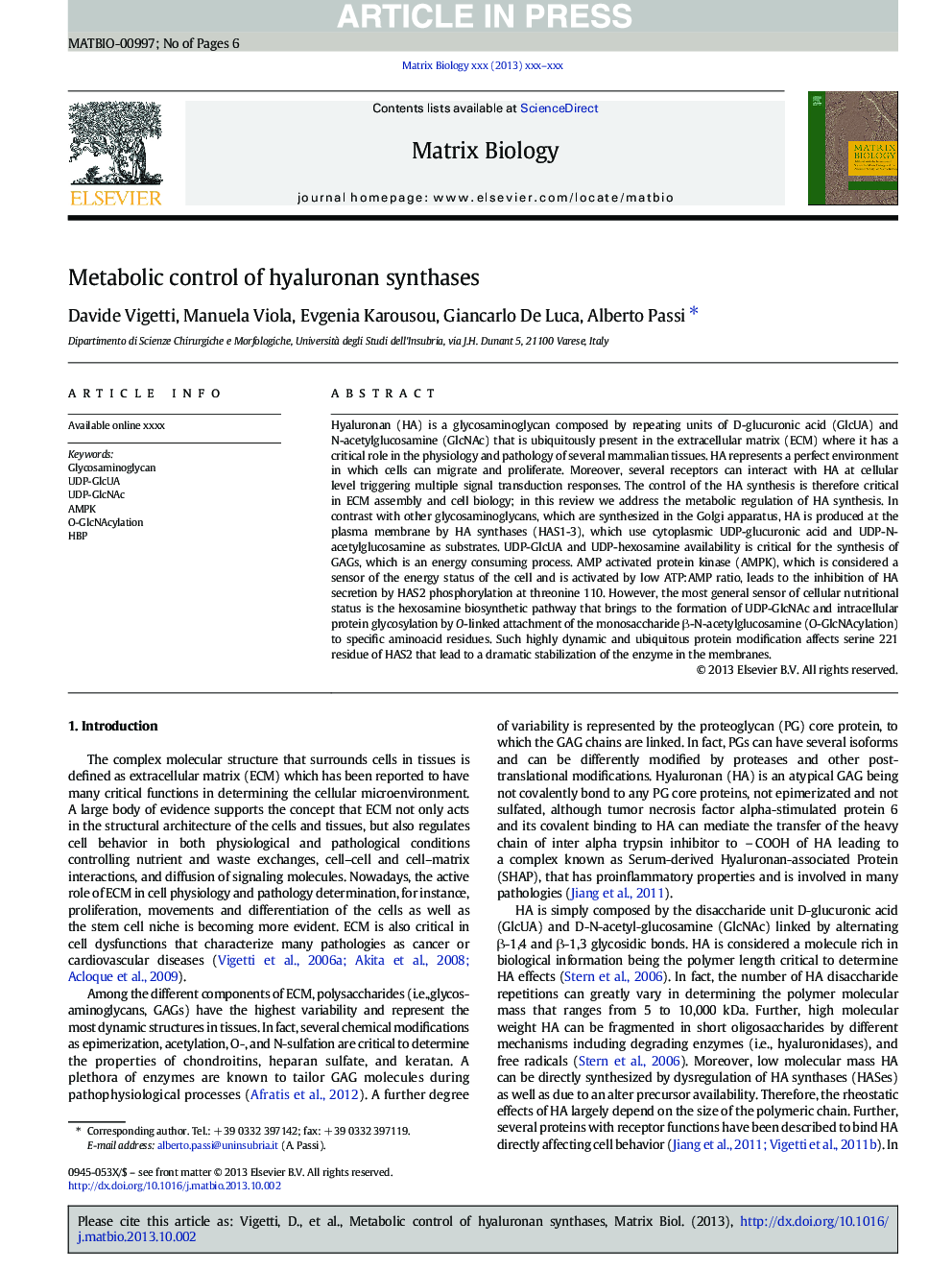| کد مقاله | کد نشریه | سال انتشار | مقاله انگلیسی | نسخه تمام متن |
|---|---|---|---|---|
| 8455299 | 1548021 | 2014 | 6 صفحه PDF | دانلود رایگان |
عنوان انگلیسی مقاله ISI
Metabolic control of hyaluronan synthases
ترجمه فارسی عنوان
کنترل متابولیک سنتاز هیالورونان
دانلود مقاله + سفارش ترجمه
دانلود مقاله ISI انگلیسی
رایگان برای ایرانیان
موضوعات مرتبط
علوم زیستی و بیوفناوری
بیوشیمی، ژنتیک و زیست شناسی مولکولی
تحقیقات سرطان
چکیده انگلیسی
Hyaluronan (HA) is a glycosaminoglycan composed by repeating units of D-glucuronic acid (GlcUA) and N-acetylglucosamine (GlcNAc) that is ubiquitously present in the extracellular matrix (ECM) where it has a critical role in the physiology and pathology of several mammalian tissues. HA represents a perfect environment in which cells can migrate and proliferate. Moreover, several receptors can interact with HA at cellular level triggering multiple signal transduction responses. The control of the HA synthesis is therefore critical in ECM assembly and cell biology; in this review we address the metabolic regulation of HA synthesis. In contrast with other glycosaminoglycans, which are synthesized in the Golgi apparatus, HA is produced at the plasma membrane by HA synthases (HAS1-3), which use cytoplasmic UDP-glucuronic acid and UDP-N-acetylglucosamine as substrates. UDP-GlcUA and UDP-hexosamine availability is critical for the synthesis of GAGs, which is an energy consuming process. AMP activated protein kinase (AMPK), which is considered a sensor of the energy status of the cell and is activated by low ATP:AMP ratio, leads to the inhibition of HA secretion by HAS2 phosphorylation at threonine 110. However, the most general sensor of cellular nutritional status is the hexosamine biosynthetic pathway that brings to the formation of UDP-GlcNAc and intracellular protein glycosylation by O-linked attachment of the monosaccharide β-N-acetylglucosamine (O-GlcNAcylation) to specific aminoacid residues. Such highly dynamic and ubiquitous protein modification affects serine 221 residue of HAS2 that lead to a dramatic stabilization of the enzyme in the membranes.
ناشر
Database: Elsevier - ScienceDirect (ساینس دایرکت)
Journal: Matrix Biology - Volume 35, April 2014, Pages 8-13
Journal: Matrix Biology - Volume 35, April 2014, Pages 8-13
نویسندگان
Davide Vigetti, Manuela Viola, Evgenia Karousou, Giancarlo De Luca, Alberto Passi,
